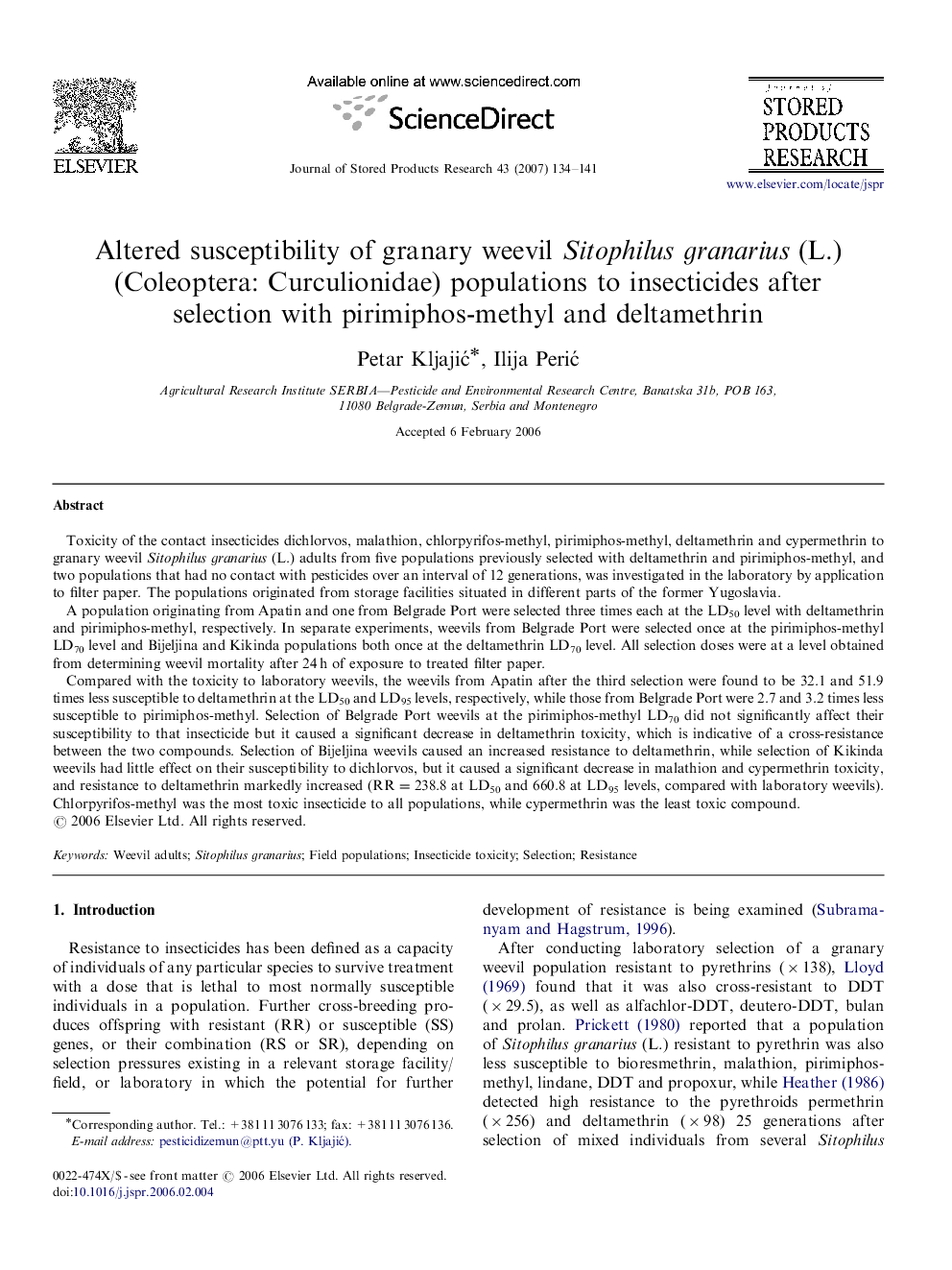| کد مقاله | کد نشریه | سال انتشار | مقاله انگلیسی | نسخه تمام متن |
|---|---|---|---|---|
| 4517574 | 1322554 | 2007 | 8 صفحه PDF | دانلود رایگان |

Toxicity of the contact insecticides dichlorvos, malathion, chlorpyrifos-methyl, pirimiphos-methyl, deltamethrin and cypermethrin to granary weevil Sitophilus granarius (L.) adults from five populations previously selected with deltamethrin and pirimiphos-methyl, and two populations that had no contact with pesticides over an interval of 12 generations, was investigated in the laboratory by application to filter paper. The populations originated from storage facilities situated in different parts of the former Yugoslavia.A population originating from Apatin and one from Belgrade Port were selected three times each at the LD50 level with deltamethrin and pirimiphos-methyl, respectively. In separate experiments, weevils from Belgrade Port were selected once at the pirimiphos-methyl LD70 level and Bijeljina and Kikinda populations both once at the deltamethrin LD70 level. All selection doses were at a level obtained from determining weevil mortality after 24 h of exposure to treated filter paper.Compared with the toxicity to laboratory weevils, the weevils from Apatin after the third selection were found to be 32.1 and 51.9 times less susceptible to deltamethrin at the LD50 and LD95 levels, respectively, while those from Belgrade Port were 2.7 and 3.2 times less susceptible to pirimiphos-methyl. Selection of Belgrade Port weevils at the pirimiphos-methyl LD70 did not significantly affect their susceptibility to that insecticide but it caused a significant decrease in deltamethrin toxicity, which is indicative of a cross-resistance between the two compounds. Selection of Bijeljina weevils caused an increased resistance to deltamethrin, while selection of Kikinda weevils had little effect on their susceptibility to dichlorvos, but it caused a significant decrease in malathion and cypermethrin toxicity, and resistance to deltamethrin markedly increased (RR=238.8 at LD50 and 660.8 at LD95 levels, compared with laboratory weevils). Chlorpyrifos-methyl was the most toxic insecticide to all populations, while cypermethrin was the least toxic compound.
Journal: Journal of Stored Products Research - Volume 43, Issue 2, 2007, Pages 134–141